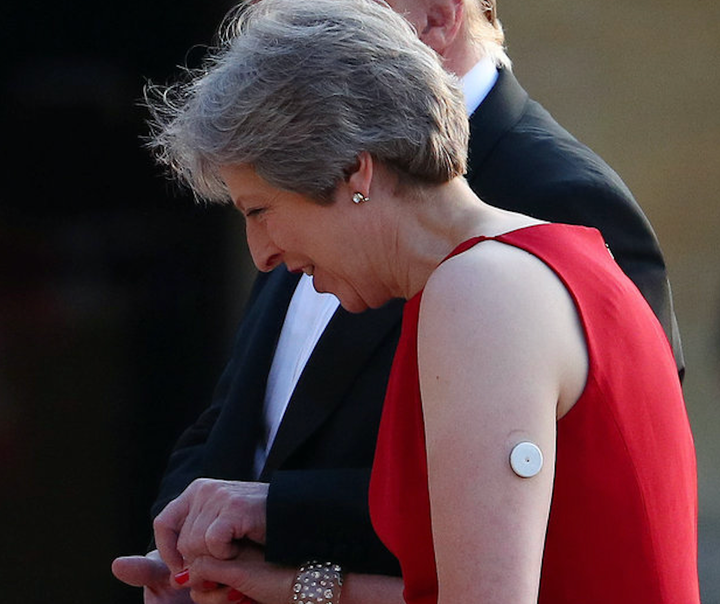
Tens of thousands of people in England with type 1 diabetes are being denied access to “life changing” blood sugar monitors or “patches” that could help them manage their condition, new data suggests.
An investigation by the BMJ has uncovered just 2 per cent of patients in England with type 1 diabetes are getting the patches on GP prescription, a much smaller proportion than the 11 per cent in Scotland, 16 per cent in Wales, and 35 per cent in Northern Ireland.
The device works by monitoring blood sugar levels, letting the wearer know when they need to inject insulin and removing the need for continuous finger prick tests.
HuffPost UK previously reported on the “postcode lottery” of access after Prime Minister Theresa May was photographed wearing a patch. In the Westminster NHS trust, where 10 Downing Street is situated, the device is available for free. Similarly, May’s home village of Sonning sits within an NHS Trust where it is available. But other patients are parting with as much as £90 a month for the device because they are unable to receive it on the NHS in their area.
HuffPost UK contacted Downing Street at the time to ask whether May receives her patch on the NHS, but a spokesperson said they were unable to discuss personal health matters.
Georgina Syrett, 23, from Hullbridge in Essex, lives with type 1 diabetes and was offered a free trial of the sensor, which works for two weeks. But once the trial came to an end, she had to pay for it herself. “Because of the area we live in, it is not provided on the NHS,” she told HuffPost UK. “It is a postcode lottery.”

Georgina has to fork out £45 for a sensor every time it needs replacing. “It is extremely expensive to maintain and I will likely not continue paying it forever,” she said. “However the sensor is good because you can see what it’s doing overnight and it continually tests.”
The sensor was given the go ahead to be prescribed on the NHS in November 2017 but its use is subject to approval by local health bodies and few places in the UK have made it available without charge to those who meet local criteria. Diabetes UK has created an interactive map to see where the sensor is freely available.
The latest BMJ data, obtained via freedom of information requests, suggests the Isle of Wight has the best rates of access, with 24.6% of people with type 1 diabetes prescribed a device on the NHS. At the other end of the scale, none of the type 1 diabetes patients in Dorset, Leicester City, Wakefield, South Worcestershire, Hull or Hartlepool and Stockton-on-Tees have received a prescription – a total of 12,446 people.
Matt Wilven, 36, who lives in Hackney, London, was diagnosed with type 1 diabetes last year. He also has to pay for his sensor – “a little over £100 a month” – as it’s not available through his local NHS Trust.
“I think the sensor is worth the money and should be available to everybody with diabetes,” Matt said. “It takes a lot of stress out of the constancy of dealing with blood glucose levels. I learnt more about my condition in the first three days of wearing one than I’d learnt in the first three weeks of being diagnosed.”
Earlier this year, Diabetes UK warned that thousands of adults and children with diabetes are being denied the life-changing technology, also known as Flash Glucose Monitoring.
NHS England said in the long-run glucose monitoring is actually more cost effective than self-monitoring. At the time a spokesperson said: “Earlier this year we wrote to clinical commissioning groups reminding them of their responsibilities and of the guidance that exists when it comes to flash glucose monitoring, and other treatments for people with Type 1 diabetes.
“Ultimately it is the responsibility of local GP groups to take these into account as they make these decisions.”
Helen Dickens, assistant director of Campaigns and Mobilisation at Diabetes UK, previously called the delay “unacceptable”.
“We are urgently calling on local health bosses to give access to the device to those who can benefit, no matter where they live,” she said. “People with diabetes have already been waiting for too long. Every area should now have a policy providing access to Flash for free on prescription.”